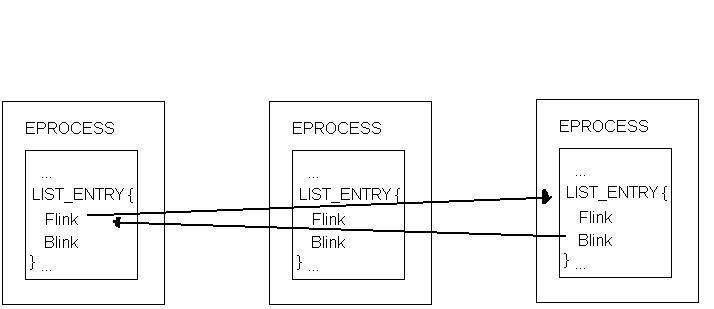A Python-based tool designed to attempt to hide processes from task managers.
I encountered this on a random forum that is well over 15 years old. The method logically should still work. It is based on DKOM (Direct Kernel Object Manipulation).
DKOM stands for Direct Kernel Object Manipulation. Each process has an EPROCESS struct (which isn't officially documented) in the kernel's memory. This structure contains information such as PID, exe name, and various other details. The struct member that interests us is LIST_ENTRY ActiveProcessLinks. The Flink member of this struct points to the next entry (process) in the doubly-linked list, while the Blink member points to the previous entry (process).
Based on the user's claim on the forum, we can conclude that all we would logically need to do is disconnect it from the doubly-linked list. What we need to do is set the Flink of the process preceding the process we want to hide to the Flink of the process we're hiding.
Note: I included the original source of the poster's version; my version was re-written in Python, while theirs is in C.
Hidden Process Diagram:
I should probably mention that if you want to reverse this process, you should restore the original Blink and Flink pointers. You can achieve this by saving the original pointer contents to a storage medium, such as a JSON file, and then restoring based on that.
p_list_procs = ListEntry.from_address(self.e_process_address + self.u_flink_offset)
p_list_procs.Blink, p_list_procs.Flink = (
ctypes.c_void_p(self.original_pointers["Blink"]),
ctypes.c_void_p(self.original_pointers["Flink"]),
)
